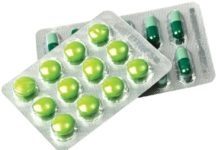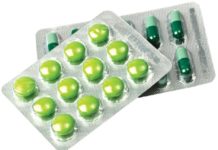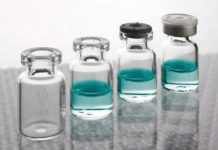Blow-Fill-Seal (BFS) technology was developed in the early 1960s and was initially used for filling many liquid product categories, for example, nonsterile medical devices, foods, Grossery and cosmetics. The technology has been developed to an extent that today BFS systems are used to aseptically produce sterile pharmaceutical products such as respiratory solutions, ophthalmic, Biological and wound-care products throughout the world.
The inherent safety of the process – packaging sterile products under aseptic conditions without human intervention – has led the FDA, and the United States Pharmacopoeia, to characterize BFS technology as an “advanced aseptic process”,
Blow-fill-seal (BFS) Technology. BFS is an automated aseptic filling process in which containers are formed, filled and sealed in a continuous operation. BFS systems can reduce the risk of product contamination by reducing operator interventions.
The systems are typically used for filling sterile ophthalmic and respiratory care products. Aseptic Processing Guidance for information about BFS systems. It should be noted that the inner surfaces of the containers can be exposed to the surrounding environment during the formation and molding steps prior to filling.
The sterile product can also be exposed to the environment during the filling and sealing steps of the BFS process. Therefore, the air quality should meet the microbiological level established for Class 100 (ISO 5) should be supplied to where the sterile product or its containers are exposed during the BFS process. Some of the more advanced BFS equipments that provide enhanced protection for the sterile product operation can be located in a Class 100,000 (ISO 8) area. Otherwise, a Class 10,000 (ISO 7) area is appropriate. Research has demonstrated a direct relationship between the number of contaminated units and the level of microbial contamination in the air surrounding the machine.
Typically, the product supply line and sterilizing product filters are steam sterilized-in-place (SIP).
Steps involved in BFS technology
- Extrusion and parison formation
- Blowing
- Filling
- Sealing
Extrusion Molding

The pharmaceutical BFS process combines the formation of plastic containers by blow/vacuum-molding extruded pharmaceutical-grade polymers with an aseptic solution filling system. Polymer granules are continuously fed to a machine hopper through an adiabatic screw extruder. Within the extruder the polymer is subjected to high temperature (usually above 160°C) and pressure (up to 350 bar or 105 Pa) and melts. It is then extruded through a die-and-pin set forming an open-ended tube of molten polymer known as a parison. The parison is supported by sterile air (parison support air) which is fed into its center through a sterilizing-grade air filter with oil free compressed air. The parison is held in position by a clamp, which on some machines also serves to seal the parison bottom. A mold set consisting of two halves then moves over to the parison and closes around it. Molding is facilitated by vacuum slots in the mold. The molded plastic is severed from the continuously extruding parison by a hot knife, and is shuttled within the mold set to the filling position. A variety of polymers may be used in the process, low and high-density polyethylene and polypropylene being the most popular.

Filling

Sealing

When inspecting BFS
Verify that HEPA-filtered or sterile air is used during steps where sterile product or materials are exposed (e.g., parison formation, container molding, and filling steps).
Evaluate the monitoring and preventative maintenance programs to determine the integrity of the utilities (cooling water, heating, etc.) associated with the BFS machine is routinely checked. Leaks in the molds or utility connections at the molds can contaminate the sterile product or containers.
Review the SIP system used to sterilize the product line. Determine the sterilization cycle has been validated and the condensate properly drains from the line. The line should also be protected between sterilization and use.
Verify that personnel who enter the classified environment surrounding the BFS machine are properly gowned and trained.
If possible, observe equipment setup and any difficulties that can lead to contamination risks. Other control procedures (media fills, environmental monitoring, disinfection of surfaces, etc.) are the same as discussed for conventional aseptic processing line.











